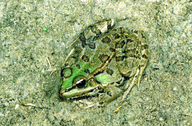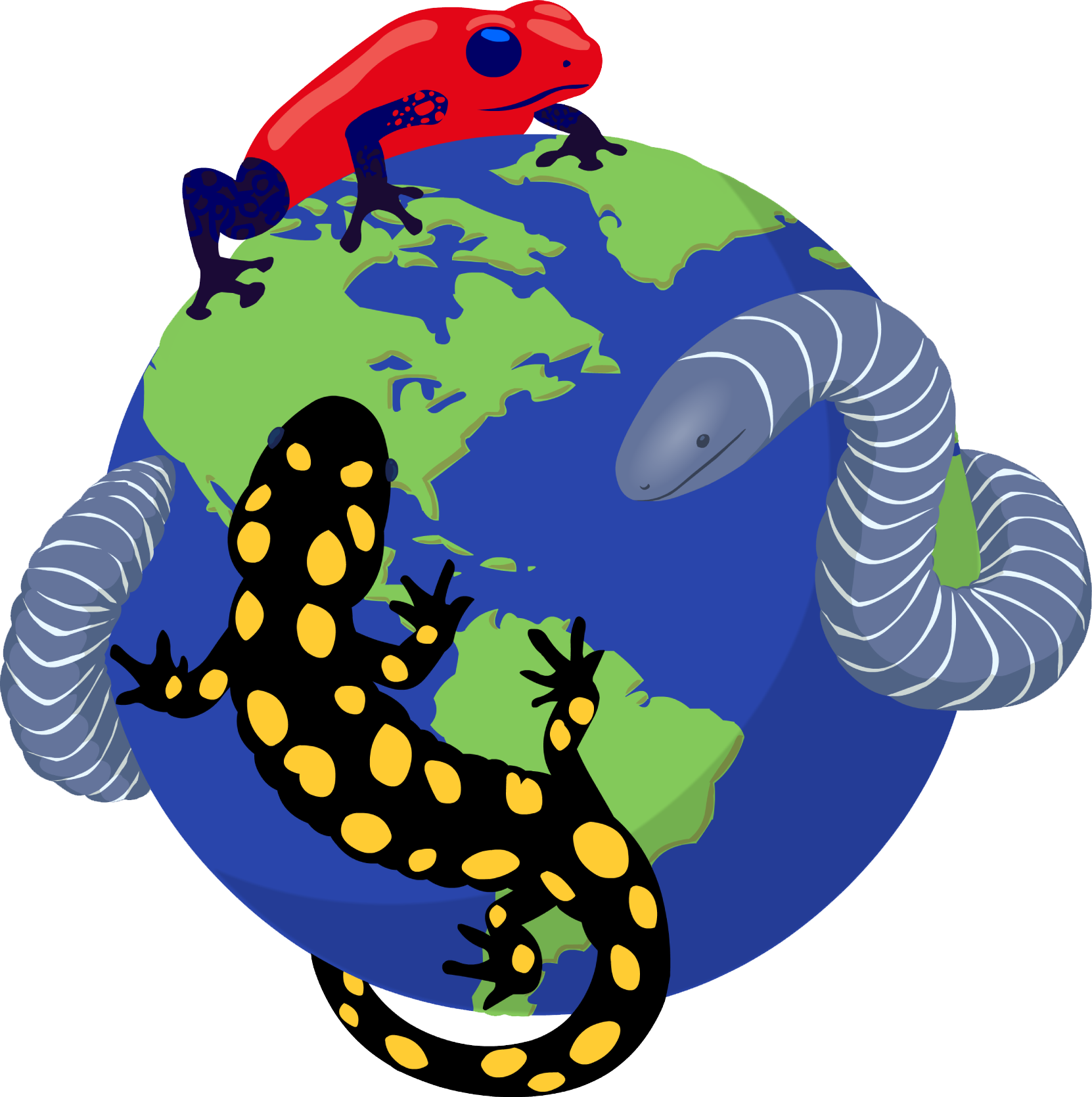|
Pelophylax saharicus (Boulenger, 1913)
Sahara Frog, North African Water Frog, North African Green Frog, Moroccan Green Frog | family: Ranidae genus: Pelophylax |
 © 2011 Martin Pickersgill (1 of 32) |
|
|
|
Description Rana saharica is a large frog, with one female from Morocco reported to measure 104.5 mm SVL (Schleich et al. 1996). The published description for this species from Schleich et al. (1996) actually reflects a mixture of Rana saharica and Rana perezi. Schleich et al. (1996) describes the morphology for R. saharica/ R.perezi as follows: The head is equally as wide as long, with an oval snout and horizontal pupils. The nostrils and upper eyelids are connected by a ridge, which continues behind the eyes, separating the flanks from the back. Males have two vocal sacs, which are protruded through slits just behind either side of the mouth. Hindfeet are webbed, and the digits often have small bulges at the termini. The skin is granular on the posterolateral venter (sides) and the posterior margins of the thighs. Males have thicker arms and nuptial pads on the innermost finger (Schleich et al. 1996). The description of color and pattern for R. saharica /R. perezi almost certainly reflects a mixture of taxa (Schleich et al. 1996). Thus it is not clear to what extent the pattern and color elements reflect within-taxon variability. Coloration is reported to be green, brown, or mixed; a yellow or green vertebral line may be present or absent; spots may be present or absent, and if present may be random or symmetrical. However, spots (bars) on the limbs are always present (Schleich et al. 1996). Distribution and Habitat Country distribution from AmphibiaWeb's database: Algeria, Egypt, Libyan Arab Jamahiriya, Morocco, Tunisia
Life History, Abundance, Activity, and Special Behaviors Reproduction typically begins in the second year of age. However, some R. saharica individuals (from both sexes) reach sexual maturity in their first year, at a minimum size of about 40 mm (Esteban et al. 1999). Breeding males are territorial and maintain distances of up to 2 meters, with a minimum of 50 cm (Schleich et al. 1996). R. saharica appears to have an extended breeding season. Esteban et al., (1999) found that their sample locality contained tadpoles of all stages (including metamorphic ones) and adult female frogs with oocytes of varying degrees of maturity. This species is predominantly aquatic. Rana saharica searches for prey in and around open water, but will also venture into nearby gardens and fields. The adult diet includes insects, fish eggs, frog eggs and fish fry, as well as one report of a 30 cm snake. Consumption of smaller conspecifics has been reported in captivity (Schleich et al. 1996).This frog is quite abundant in the Maghreb (Schleich et al. 1996). Trends and Threats Possible reasons for amphibian decline Drainage of habitat Comments
References
Arano, B., Llorente, G. A., Montori, A., Buckley, D., and Herrero, P. (1998). ''Diversification in north-west African water frogs: molecular and morphological evidence.'' Herpetological Journal, 8(1), 57-64. Buckley, D., Arano, B., Herrero, P., Llorente, G., and Esteban, M. (1994). ''Moroccan Water Frogs vs. R. perezi: allozyme studies show their differences.'' Zoologica Poloniae, 39(3-4), 377-385. Buckley, D., Arano, B., Herrero, P., and Llorente, G. (1996). ''Population structure of Moroccan Water Frogs: genetic cohesion despite a fragmented distribution.'' Journal of Zoological Systematics and Evolutionary Research, 34(3), 173-179. Esteban, M., Garcia-Paris, M., Buckley, D., and Castanet, J. (1999). ''Bone growth and age in Rana saharica, a water frog living in a desert environment.'' Annales Zoologici Fennici, 36(1), 53-62. Harris, D.J., Batista, V., and Carretero, M.A. (2003). ''Diversity of 12S mitochondrial DNA sequence in Iberian and northwest African water frogs across predicted geographic barriers.'' Herpetozoa, 16, 81-83. IUCN, Conservation International, and NatureServe. 2006. Global Amphibian Assessment. www.globalamphibians.org. Accessed on 08 April 2007. Schleich, H. H., Kastle, W., and Kabisch, K. (1996). Amphibians and Reptiles of North Africa. Koeltz Scientific Publishers, Koenigstein. Originally submitted by: Kellie Whittaker, Justin Rabie (first posted 2005-10-05) Edited by: Kellie Whittaker (2007-09-04) Species Account Citation: AmphibiaWeb 2007 Pelophylax saharicus: Sahara Frog <https://amphibiaweb.org/species/5140> University of California, Berkeley, CA, USA. Accessed May 29, 2025.
Feedback or comments about this page.
Citation: AmphibiaWeb. 2025. <https://amphibiaweb.org> University of California, Berkeley, CA, USA. Accessed 29 May 2025. AmphibiaWeb's policy on data use. |



 Map of Life
Map of Life